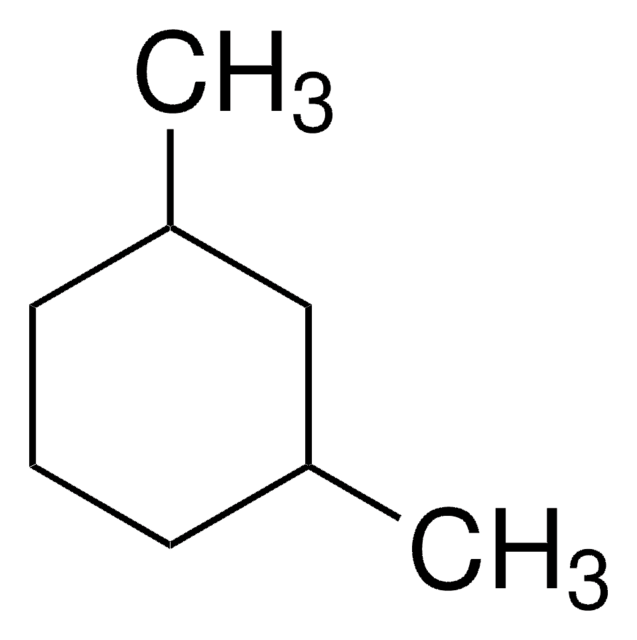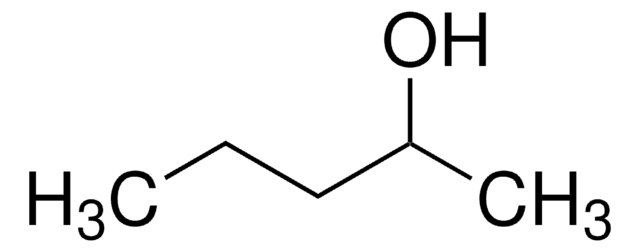152463
2-Methyl-2-butanol
ReagentPlus®, 99%
Sinonimo/i:
tert-Amyl alcohol, tert-Pentyl alcohol
About This Item
Prodotti consigliati
Densità del vapore
3 (vs air)
Livello qualitativo
Tensione di vapore
12 mmHg ( 20 °C)
Nome Commerciale
ReagentPlus®
Saggio
99%
Forma fisica
liquid
Temp. autoaccensione
819 °F
Limite di esplosione
9 %
Indice di rifrazione
n20/D 1.405 (lit.)
pH
6.0 (20 °C, 118 g/L)
P. eboll.
102 °C (lit.)
Punto di fusione
−12 °C (lit.)
Densità
0.805 g/mL at 25 °C (lit.)
Stringa SMILE
CCC(C)(C)O
InChI
1S/C5H12O/c1-4-5(2,3)6/h6H,4H2,1-3H3
MSXVEPNJUHWQHW-UHFFFAOYSA-N
Cerchi prodotti simili? Visita Guida al confronto tra prodotti
Categorie correlate
Descrizione generale
Applicazioni
Note legali
Avvertenze
Danger
Indicazioni di pericolo
Classi di pericolo
Acute Tox. 4 Dermal - Acute Tox. 4 Inhalation - Eye Dam. 1 - Flam. Liq. 2 - Skin Irrit. 2 - STOT SE 3
Organi bersaglio
Central nervous system, Respiratory system
Codice della classe di stoccaggio
3 - Flammable liquids
Classe di pericolosità dell'acqua (WGK)
WGK 1
Punto d’infiammabilità (°F)
68.9 °F - closed cup
Punto d’infiammabilità (°C)
20.5 °C - closed cup
Dispositivi di protezione individuale
Eyeshields, Faceshields, Gloves, type ABEK (EN14387) respirator filter
Scegli una delle versioni più recenti:
Possiedi già questo prodotto?
I documenti relativi ai prodotti acquistati recentemente sono disponibili nell’Archivio dei documenti.
I clienti hanno visto anche
Protocolli
-Butanol; 2-Methyl-2-butanol; 2-Methyl-1-butanol; 3-Pentanol; 1-Butanol; 2-Methyl-1-propanol; 2-Pentanol, 98%; 3-Methyl-1-butanol; 1-Propanol
Il team dei nostri ricercatori vanta grande esperienza in tutte le aree della ricerca quali Life Science, scienza dei materiali, sintesi chimica, cromatografia, discipline analitiche, ecc..
Contatta l'Assistenza Tecnica.











